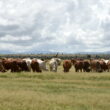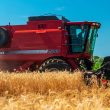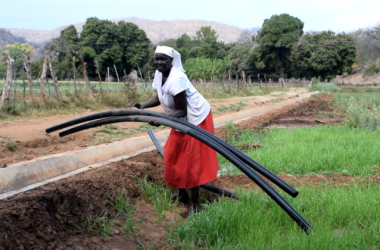Dadirai Chinamo and Chinaniso Chibudu
Tobacco Research Board, Kutsaga Research Station, P. O. Box 1909, Harare, Zimbabwe
Introduction
Land preparation and soil testing are essential components, among several others, for profitable tobacco production. Timely land preparation ensures optimum soil conditions for the next planting in particular fields. While soil testing is vital in estimating concentrations of nutrients available for plant growth, and thus gives guidelines for determining fertilizer recommendations for specific farms or lands. The importance of early ploughing and soil testing is often not taken seriously by the majority of tobacco growers. This is evidenced by a number of reports received in plant clinic and farm visits, which showed heavy weed infestations, poor stand establishment, nitrogen deficiency, high costs of tobacco production and late submissions of soils for testing and recommendations.
Early Land Preparation
Ploughing from January to March/April may be considered as early-ploughed and from July onwards as late ploughed. With early-ploughing, the grass is normally disced in January or February and the field ploughed in March or April that is before the end of the rains when the soil is still moist depending on the extent of the rainy season. Ploughing depth should not be less than 23 cm. Benefits of early ploughing depend on growing area whether fast, medium, and slow growing, and also soil texture. Heavy soils should not be ploughed early because mineralization will allow maximum decomposition of organic matter and this will avail excess nitrogen. Late ploughing, is mostly recommended for fast growing regions or heavy textured, fertile soils as temperatures and the rate of nitrogen mineralization are usually high during this period.
Benefits of early ploughing
Early ploughing is usually ideal in slow growing regions or infertile sands, before the end of the rains when the soil is still moist, giving early and uniform decomposition of organic matter and promoting mineralization of nitrogen so that it can be utilized at the time of planting. Some research done at Kutsaga have shown that deep early ploughing can release the equivalent of 90 kg/ha of ammonium nitrate. The wider implications are that fertilizer costs are reduced with early ploughing and the tobacco crop is likely to be healthy and may not be stunted and yellowish due to nitrogen deficiency.
Early ploughing while the soil is still moist allows for adequate soil moisture conservation so that it can be utilized at the time of planting. Hence less water is used at planting thus giving an early start and good crop establishment and survival.
Figure 1. Late ploughed land with inadequate moisture conservation with early stunting in tobacco crop
Early ploughing under of weeds is an early weed control strategy which reduces the weed seed bank. The weeds are ploughed under before setting seed whilst the seed set is incorporated deep into the soil where it may germinate but not emerge.
Figure 2 & 3. Early ploughed land and late ploughed land infested with weeds
A uniform good tilth (Fig. 2) is more easily obtained with early ploughing and conditions are favorable thereby minimising ploughing and discing costs. Consequently implements wear and tear is reduced. Early ploughing soon after the rains also ensures that cattle for draught are in good condition to pull the plough unlike late ploughing which is during dry season when cattle have inadequate strength to pull the plough. Late ploughing does not allow good fine tilth.
Soil testing
Nutrient management is important in tobacco production and fertilizers should only be applied in the amounts that meet crop nutrient requirements. This is because inadequate or excessive fertiliser applications have an impact on yield and quality. Applying excess nutrients has repercussions. For instance excess N delays ripening of tobacco, extends curing time and results in more unripe cured leaf. Excess N also stimulates sucker growth which increase problems with aphids. Therefore, when growers guess about the need for lime or fertilisers too much or too little is likely to be applied. A soil test is the basis for an efficient and effective lime and fertilisation program.
Soil testing gives an indication of the level of acidity or alkalinity of the soil (pH). Thus if not determined, the availability/solubility of soil nutrients may greatly be affected. Soil pH is corrected through the application of lime in lands. Any pH below 5.5 will require adjustment using lime. In addition, soil testing provides guidelines for the efficient use of soil fertility ameliorants such as fertilisers. This aids in predicting crop responses to applied fertilizer with an acceptable degree of reliability. Efficient nutrient use can help reduce fertilizer costs and protect the farm environment without reducing crop yield or quality.
One of the most important aspects of soil sampling is obtaining a soil sample that is representative of field conditions. An improperly collected sample will be meaningless, and the corresponding recommendations will be poorly suited for the actual soil conditions. Sampling can be done using a spade or an auger (Fig. 4a & 4b). Soil samples should be taken at the end of the season soon after the crop harvest using the Z-sampling method (Consult the TRB or its publications for in-depth guidance). The method involves sampling at 10 points in a ‘Z’ pattern in each field (Fig. 5). The sub-samples are then mixed thoroughly, divided into four parts using the ‘quartering technique’ (Fig. 6), and small portions are taken from each quarter until there is one representative composite sample of 1 kg. Growers should avoid anthills or where fertilisers are normally off-loaded when sampling. Once soil sampling has been done, fields are then ploughed in preparation for the following season’s crop.
Figure 4a. Soil sampling using a spade
Figure 5. The “Z” sampling scheme Figure 6. Quartering technique
Conclusion
Early ploughing and soil testing give maximum economic value in tobacco production by reducing production costs and increasing yield and quality of tobacco.
For more information, contact Kutsaga Research Station’s Crop Production and Molecular Technologies Division on VOIP 086 88002604 or email: tobres@kutsaga.co.zw or visit Kutsaga Research Station.









